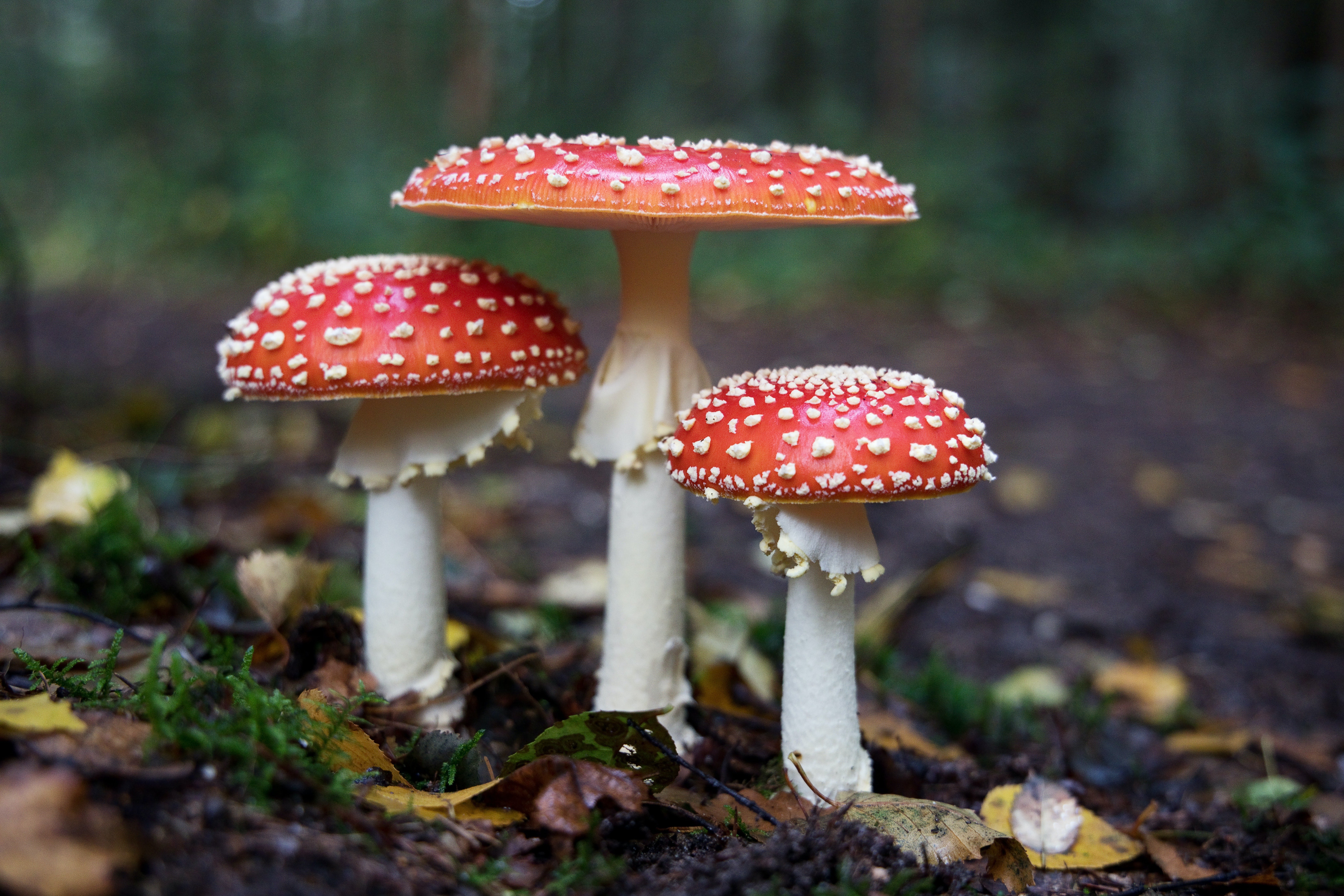Spring 2022 seems to be the season of the mushroom. Fashion shows in previous years have highlighted the mycelium of the fungi—the under-ground root-like network from which mushrooms spring up—and the “leather” that can be made from those threads. This season, designers are slapping images of mushrooms themselves on everything from handbags to jumpsuits. You can even buy toadstool-inspired accessories, like a $6,950 green mushroom pendant.
While the fruiting body of the fungus—that’s the above-ground “mushroom” part—is having its moment, we talked to fungal biologist Merlin Sheldrake, author of Entangled Life which was the inspiration behind the 2021 Iris Van Herpen collection. Sheldrake explains why now is the time for mushrooms to shine, and what he would do if he was given the reins of one of these big fashion houses. The interview below has been edited and condensed for clarity.
Sarah Braner: Why do you think mushrooms are having a moment in the fashion world right now?
Merlin Sheldrake: We know a lot more about fungi than we used to, partly because of the development of new technologies, like DNA sequencing, that have opened up the fungal world and revealed the intricacies and the remarkable properties of these organisms.
Also, as the environmental emergency has worsened, there’s been a growing awareness of the interconnectivity of the living world. Fungi are really powerful poster organisms for ecological thinking. Ecology studies the relationships between organisms, and fungi form physical connections between organisms, so embody this fundamental principle of ecology.
Another point is the growing interest in psychedelics. Much of the recent research into psychedelics has taken place using psilocybin, which is originally produced by fungi. I think the remarkable effect of this fungal compound on our human minds has opened many people to the fungal world more generally and all the remarkable things that fungi do in the biosphere.
You mentioned that it relates back to our current ecological crisis. Stella McCartney recently used something to construct her clothes called “mushroom leather,” which is a more sustainable form of leather. Is that just a gimmick?
Fungi are being used to produce various different types of material. You can build building blocks and boards out of fungal mycelium [the “roots” that support a network of mushrooms], and you can make textiles out of fungal mycelium— leather-like textiles. Different companies produce it in different ways. The samples I’ve seen have looked and felt like animal leather. There’s enormous promise in these materials. You can grow fungal leather on agricultural waste, cornstalks or wood chips that will otherwise be discarded. You can grow these materials in a short period of time, a couple of weeks, and you don’t need to kill animals. You don’t need to clear forests for pasture for the animals that you’re going to kill. There’s a whole lot of polluting industrial work that you can bypass, so they show enormous promise.
I saw that you grew oyster mushrooms out of the pages of your book (they kind of looked like brown, cupped bookmarks, about to swallow the book whole). Could you theoretically grow mushrooms or a fungal network on a piece of clothing, so that, say, your jacket has actual mushrooms on it?
You could grow mushrooms on a piece of clothing, but you probably wouldn’t want to wear them. Mushrooms are very ephemeral, and so they don’t last long. It wouldn’t really be wearable, and there’ll be mushrooms growing out of it, which would perish fairly quickly. I think it’s unlikely that people would take that approach to making fungal fashion.
Say that you were put in charge of one of these high-fashion brands. What mushrooms or fungi would you put on an article of clothing or use to inspire another design?
Probably most of all, I would try to think very carefully about the entire lifecycle of the product. Fungi invites us to think about waste in new ways. Fungi are remarkable decomposers and break down an enormous number of substances on the planet. I mean, the whole biosphere depends on fungal decomposition.
